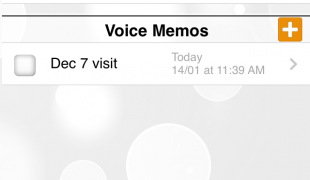- 7269
- 515
- 8
- 10
- 0
- Help Ukraine
About the solution
In 2010, Jenny was diagnosed with multiple myeloma, a type of blood cancer. She and her husband, Paul, wanted to do everything they could to give her more time to live.
After several rounds of stem cell transplants, they started to look for clinical trials of new drugs. They found 450 open trials for her disease, but information was lacking about which one could benefit her more. She chose the eight trials she found most promising and received a response from two of them.
That is when Jenny and Paul decided to create HealthTree, an app which works like a kind of ‘Linkedin’ for patients with myeloma, doctors and researchers.
HealthTree allows each patient to provide anonymous information, such as the exact disease, treatments and immune status in order to connect with researchers and doctors who might be working on a new drug that could help them.
Since the major tech-medicine companies such as IBM, Microsoft and Google said they couldn’t gather the data for the app due to health care privacy laws, Jenny and her husband decided to build the app themselves, with the help of a group of experts in myeloma.
HealthTree allows the patients to search for open clinical trials that correspond to their personal characteristics and disease information. This means that instead of starting by looking at 450 trials, these patients are matched with 20-30 open trials.
For the future, Jenny wants to add more information to the app, such as age, ethnicity and therapies patients use before stem cell transplants, as well as research about who is living longer after transplants due to genetic characteristics. According to Jenny, doctors from UC San Francisco have expressed interest in HealthTree as an hypothesis-generating tool.
Now, more than 2500 myeloma patients have used HealthTree and she hopes to expand it to other diseases in the future.
The app can be downloaded for free at the App Store and the platform can be accessed on healthtree.org.
Adapted from: http://bit.ly/2JqVAjg
More info: https://www.healthtree.org
https://apple.co/2WsHPGh
This solution shall not include mention to the use of drugs, chemicals or biologicals (including food); invasive devices; offensive, commercial or inherently dangerous content. This solution was not medically validated. Proceed with caution! If you have any doubts, please consult with a health professional.
DISCLAIMER: This story was written by someone who is not the author of the solution, therefore please be advised that, although it was written with the utmost respect for the innovation and the innovator, there can be some incorrect statements. If you find any errors please contact the patient Innovation team via info@patient-innovation.com
-
-
277
-
0
-
2929

Ukrainian war refugee couple, one of them a cancer patient, creates an app- AdvIsory.Doctor- for refugees to securely store, interpret, and share medical records.
CAREGIVING
COMMUNICATION: Communicating, whether by speaking, listening, or other means
Traveling
Cancer
Website
App (Including when connected with wearable)
AI algorithm
Enhancing health literacy
Promoting self-management
Manage Medication
Building Supportive Community Relationships
Promoting inclusivity and social integration
To improve Treatment/Therapy
Preventing (Vaccination, Protection, Falls, Research/Mapping)
Raise awareness
Caregiving Support
General and Family Medicine
Medical Oncology
Germany
-
-
-
585
-
0
-
9781

Cancer survivor creates new app to help patients overcome chemo brain
-
-
-
225
-
0
-
2356

A support platform for survivors of sexual assault
COMMUNICATION: Communicating, whether by speaking, listening, or other means
CAREGIVING
App (Including when connected with wearable)
Managing pain
Building Supportive Community Relationships
Recovering from Traumatic Injuries
Enhancing Mental Health
To improve Treatment/Therapy
Caregiving Support
Gynecology and Obstetrics
Psychiatry
Caregiver Support
Mental health support
Women's health
United Kingdom
-
 en
en